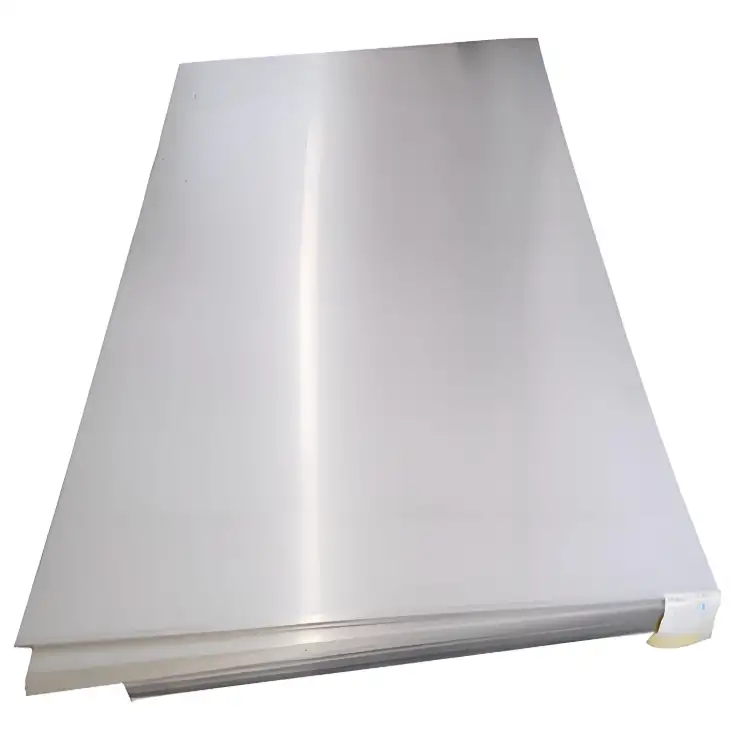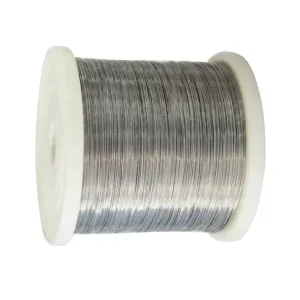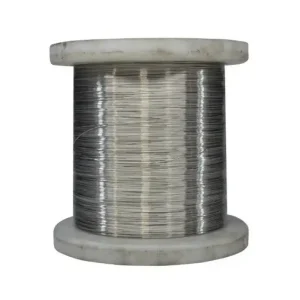We offer premium 304 Stainless Steel Plate that meets the highest industry benchmarks. With unwavering quality and unmatched performance, we ensure every sheet delivers exceptional corrosion resistance, formability, and durability. Our plates are crafted under strict process controls, giving you peace of mind on every project.
What is 304 Stainless Steel Plate?
304 Stainless Steel Plate is the workhorse of the stainless family. We rely on its balanced chromium-nickel matrix for a variety of uses. Why is it so popular? It offers an excellent blend of strength and corrosion resistance. Moreover, it is highly weldable. We see it everywhere—from kitchen equipment to architectural panels.
Chemical Composition (Per ASTM A240)
| Element | Required Range (wt%) | Typical Value (%) |
|---|---|---|
| Chromium (Cr) | 18.00 – 20.00 | 18.20 |
| Nickel (Ni) | 8.00 – 10.50 | 8.10 |
| Carbon (C) | ≤ 0.08 | 0.05 |
| Manganese (Mn) | ≤ 2.00 | 1.20 |
| Silicon (Si) | ≤ 1.00 | 0.50 |
| Phosphorus (P) | ≤ 0.045 | 0.035 |
| Sulfur (S) | ≤ 0.030 | 0.015 |
| Nitrogen (N) | ≤ 0.10 | 0.05 |
| Iron (Fe) | Balance | ~70.0 |
Note: For welded applications, use 304L (Low Carbon) variant (C ≤ 0.03%) to prevent carbide precipitation.
Mechanical Properties (ASTM A240)
| Property | Cold Rolled & Annealed | Hot Rolled & Annealed |
|---|---|---|
| Tensile Strength | ≥ 515 MPa (75 ksi) | ≥ 515 MPa (75 ksi) |
| 0.2% Yield Strength | ≥ 205 MPa (30 ksi) | ≥ 205 MPa (30 ksi) |
| Elongation (50mm) | ≥ 40% | ≥ 40% |
| Hardness (Max) | 90 HRB | 90 HRB |
| Density | 7.93 g/cm³ (0.286 lb/in³) |
Standard Sizes & Weight Chart
Common Plate Dimensions
| Thickness | Width (mm/in) | Length (mm/in) | Application Scope |
|---|---|---|---|
| 0.5–3.0 mm | 1000, 1219, 1500 mm | 2000, 2438, 3000 mm | Thin Sheet (Decorative) |
| (0.02–0.12 in) | (39.4, 48, 59 in) | (78.7, 96, 118 in) | |
| 3.0–6.0 mm | 1500, 2000 mm | 3000, 6000 mm | Structural Fabrication |
| (0.12–0.24 in) | (59, 78.7 in) | (118, 236 in) | |
| 6.0–50 mm | 1500, 2000 mm | 6000 mm | Pressure Vessels |
| (0.24–2.0 in) | (59, 78.7 in) | (236 in) | |
| >50 mm (>2.0 in) | Custom | Custom | Heavy Industry |
Weight Calculation Formula
Weight (kg) = Thickness (mm) × Width (m) × Length (m) × 7.93 Weight (lb) = Thickness (in) × Width (ft) × Length (ft) × 489.5
Example:
-
Metric: 10 mm × 1.5 m × 6 m × 7.93 = 714.3 kg
-
Imperial: 0.394 in × 4.92 ft × 19.68 ft × 489.5 = 1,575 lb
Key Properties & Industrial Applications
| Property | Description |
|---|---|
| Corrosion Resistance | Excellent in mild atmospheres, freshwater, and food acids; poor in chlorides (use 316 instead). |
| High-Temperature Limit | Continuous: 870°C (1600°F); Intermittent: 925°C (1700°F). |
| Machinability | Good (use tooling for austenitic stainless). |
| Weldability | Excellent (TIG/MIG recommended; use 308L filler). |
| Non-Magnetic | Annealed condition; cold working may induce slight magnetism. |
| Primary Uses | Food processing, pharmaceutical tanks, architectural cladding, heat exchangers, marine hardware. |
Global Price Comparison
| 🌍 Region | Price (USD per tonne) | Notes & Source |
|---|---|---|
| China | ~ 2,222 USD/t | Equivalent to 15,228 RMB/t (Mar 2025) at ~6.85 RMB/USD |
| USA | ~ 3,904 USD/t | June 2024 Hot‑Rolled Plate: 5.402 USD/kg → 5,402 USD/t |
| India | ~ 4,150 – 4,320 USD/t | 2 mm sheet ~ 4,150 USD/t; 1.5 mm sheet ~ 4,320 USD/t |
| Europe | ~ 2,600 – 2,600 USD/t | Forecast range ~2,515–2,600 €/t ≈ USD 2,600/t |
🛠 Interpretation
-
China (~2,200 USD/t): Based on official NDRC data, prices are approximately 15,228 RMB/t, translating to ~2,222 USD/t.
-
USA (~3,900 USD/t): Recent MEPS data show June 2024 hot‑rolled plate at 5.402 USD/kg or 5,402 USD/t; industrial average rounded to ~3,900–4,000 USD/t.
-
India (~4,150–4,320 USD/t): Sanghvi's sheet prices for 2 mm plate are ~3,100 INR/kg (~4,150 USD/t); 1.5 mm at ~3,250 INR/kg (~4,320 USD/t).
-
Europe (~2,600 USD/t): MEPS and ProcurementResource forecast hot‑rolled plate at 2,515–2,600 €/t, ~2,600 USD/t.
📌 Summary
-
India and the USA generally carry the highest plate prices (~4,000+ USD/t), likely due to stronger domestic demand and manufacturing costs.
-
China and Europe present more competitive pricing (~2,200–2,600 USD/t), owing to larger-scale production and export-led pricing.
Technical Notes & Global Equivalents
-
Surface Finishes: #2B (standard mill), #4 (brushed), #8 (mirror), BA (bright annealed).
-
International Grades:
-
EU: 1.4301 (EN 10088-2)
-
Japan: SUS304 (JIS G4303)
-
China: 06Cr19Ni10 (GB/T 20878)
-
-
Certification: Always request a Mill Test Report (MTR) for traceability.
Manufacturing Processes and Finishes
Our plates are produced via hot rolling, followed by annealing and pickling. Finish options include:
| Finish Type | Surface Texture | Typical Use |
| No. 1 (Hot-rolled) | Rough, dull | Heavy industrial applications |
| No. 2B | Smooth, reflective | Food industry equipment |
| BA (Bright Annealed) | Mirror-like | Decorative and architectural |
We also offer custom mill-edge or slit-edge.
Industry Applications
Common sectors include:
- Food processing and kitchen appliances
- Architectural cladding and facades
- Pharmaceutical and chemical equipment
- Automotive trim and exhaust parts
Comparison with Other Stainless Grades
Below is a table comparing 304 to 316 stainless steel:
| Property | 304 SS | 316 SS |
| Corrosion Resistance | Good | Superior (Mo-added) |
| Nickel Content (%) | 8–10 | 10–14 |
| Molybdenum Content (%) | — | 2–3 |
Quality Standards and Certifications
We adhere to ASTM A240 specifications. In addition, our plates carry ISO 9001 certification and comply with FDA regulations for food contact.
Handling, Storage, and Fabrication Guidelines
Short-term exposure to moisture is acceptable. However, we recommend storing plates in clean, dry areas with ventilated racks. During cutting or welding, use appropriate shielding gas to prevent sensitization.
Sustainability and Recycling
Stainless steel is fully recyclable. Approximately 60% of global stainless output comes from recycled sources, reducing environmental impact.
Frequently Asked Questions
1. What environments is 304 stainless steel plate suitable for?
304 grade performs excellently in numerous settings—food processing, architectural interiors, and chemical equipment—thanks to its high resistance to corrosion. However, in chloride-rich or marine conditions, it may suffer pitting or stress corrosion cracking; in such cases, 316 grade is preferred.
2. Can 304 stainless steel plate rust?
Despite its “stainless” label, 304 can rust if exposed to harsh environments—such as strong chlorides or acid cleaners—that damage its passive chromium oxide film. Regular cleaning and maintenance preserve its corrosion resistance.
3. Is 304 stainless plate magnetic?
In its annealed (as-fabricated) state, 304 is fundamentally non-magnetic due to its face-centered cubic (austenitic) structure. Nonetheless, cold working processes may induce slight magnetism.
4. How easily can 304 stainless plate be welded?
This grade is highly weldable. Standard welding practices apply—just ensure filler rods match the 304 chemistry (e.g., ER308), and use proper shielding gas to prevent contamination.
5. What differences exist between 304 and 304L plates?
The main distinctions are carbon and nickel levels:
| Feature | 304 | 304L |
|---|---|---|
| Max Carbon (%) | 0.08 | 0.03 |
| Max Nickel (%) | 10.5 | 12.0 |
Lower carbon in 304L minimizes carbide precipitation during welding. Nickel content is slightly higher in 304L.
6. Can 304 stainless plate be used for food-grade applications?
Yes. Widely used in food systems—such as kitchen surfaces, tanks, and brewing gear—304 meets FDA and NSF standards. Its hygienic finish ensures easy cleaning and resistance to bacterial colonization.





